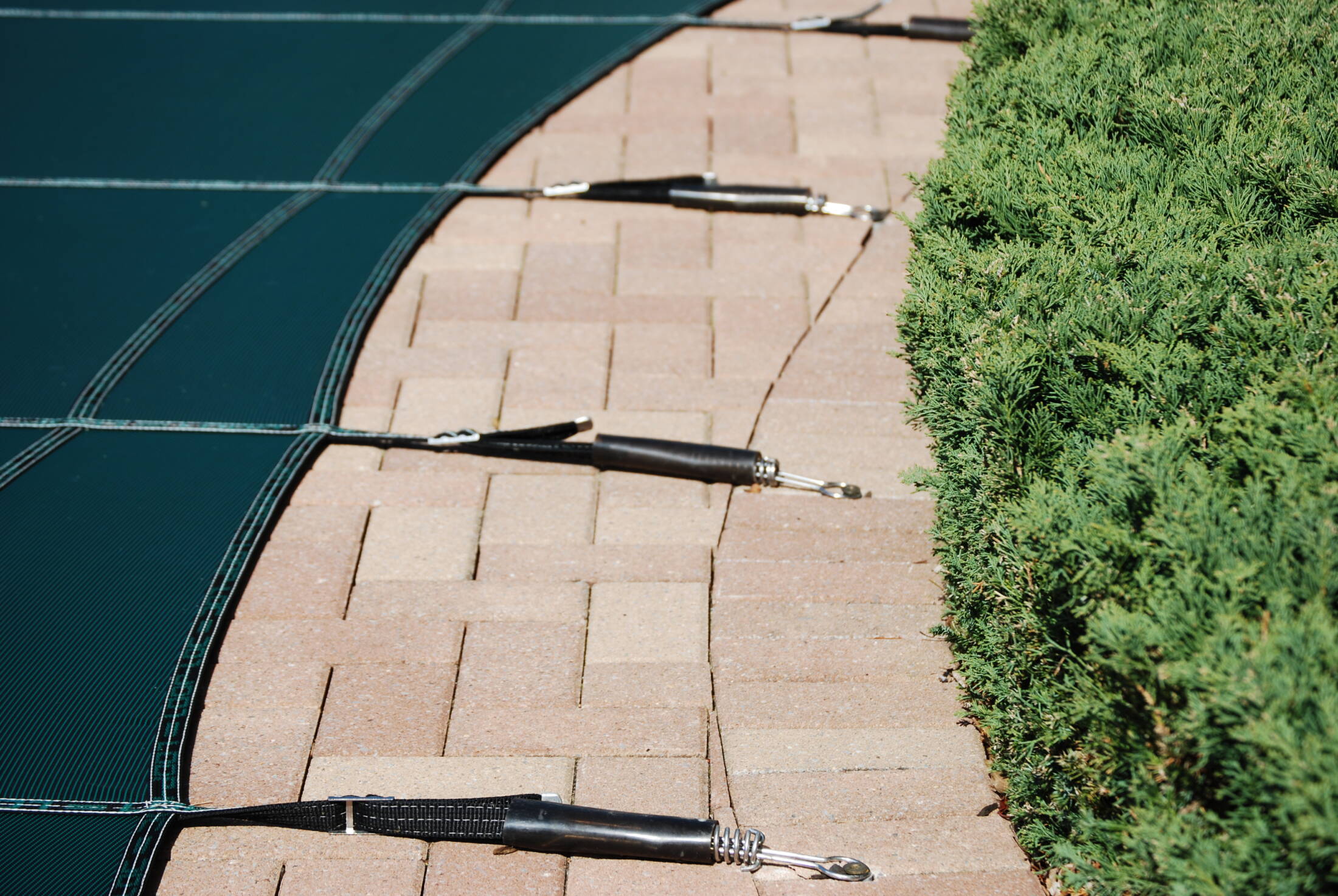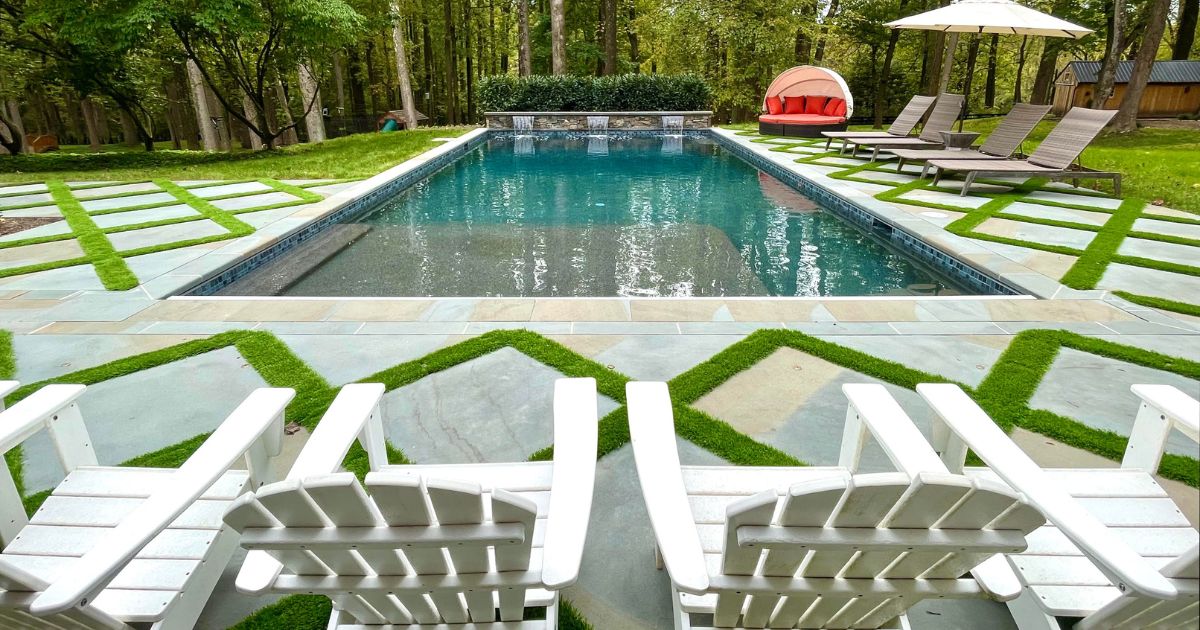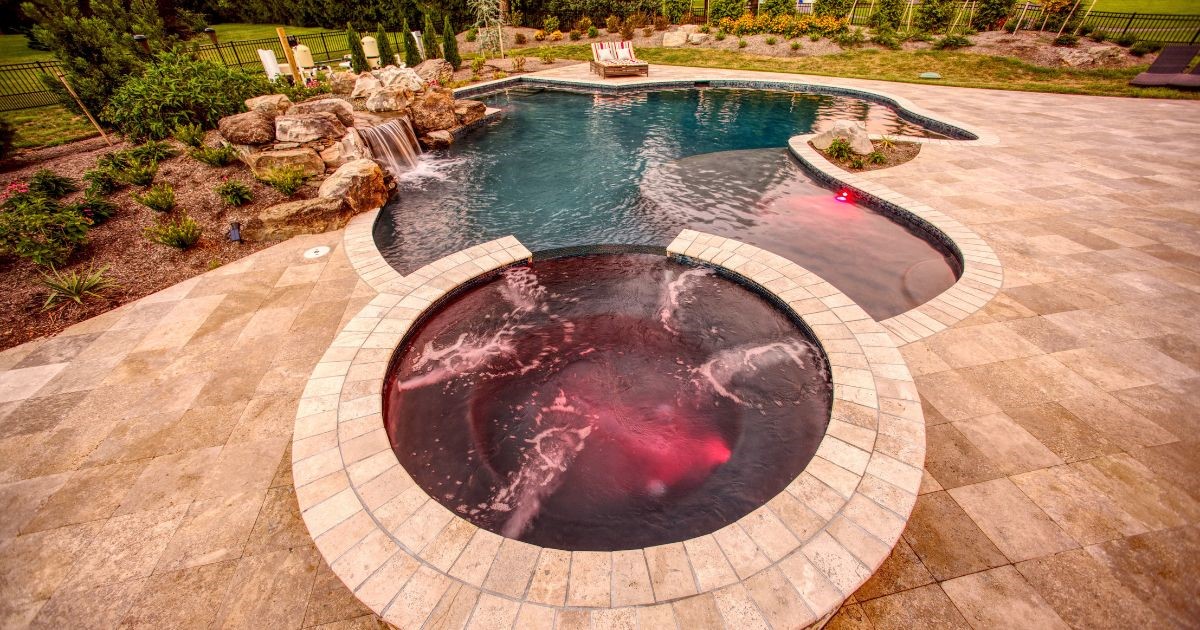Owning a swimming pool can feel like the ultimate luxury, but it comes with a…

When and How to Close Your Inground Pool
Now that Labor Day has come and gone and the kids are back in school, your inground pool isn’t getting as much use. But you don’t have to close it right away. In fact, closing your pool too early could cause problems come springtime. Today, we’re going to go over some tips on when and how to close your inground pool.
Let’s get started.
When to Close Your Inground Pool
Deciding when to close your inground pool can depend on our Maryland weather. You want to keep your pool open at least until the daytime temperatures are down in the 60s for an extended period. Temperatures above that can promote algae growth if you close the pool too early. It can also cause staining and algae growth in the spring because the pool chemicals don’t last long enough.
You also want to make sure you close your pool before freezing temperatures hit. In the Baltimore area, this generally means you will need to close it sometime between the end of September and as late as early November. October is a sweet spot.
How to Close an Inground Pool
While we recommend hiring a pool care company to close and winterize your pool, we know many pool owners like to do much of it themselves. You’ll want to have the following gear available so you’re not stopping and starting and hunting for what you need to complete the next step.
- Winter pool cover
- Pool brush
- Pool vacuum or your automatic pool cleaner
- Winter pool plugs and skimmer plug
- Air compressor
- Winter pool chemicals including algaecide
- Winter pool cover pump (if you have a solid pool cover)
- Tools to remove ladders and other pool accessories
Below are the basic steps to take to close and winterize an inground pool:
-
Layout and examine your pool cover.
This may sound like it shouldn’t be the first step, but it is. You need to check to make sure your winter pool cover survived being stored for the summer without any damage. Check for cracks or tears. If you find damage, you will want to order a new pool cover.
-
Clean the Pool
Using the pool brush, get into all the nooks and crannies and brush the sides of your pool thoroughly. Then vacuum the pool manually, or with your automatic pool cleaner to suck up any loose debris.
RELATED READING
Why You Need a Robotic Pool Cleaner for Your Inground Pool
-
Shock, Sanitize, and Balance
Shock, sanitize, and balance your pool chemicals. Then add 10 oz. of algaecide per 10,000 gal. of pool water. You will also need to add a metal remover or sequestering agent. Be sure to follow the manufacturer’s directions.
RELATED READING
-
Let Chemicals Work, then Lower the Water Level
Let the pool chemicals filter through the system for 24 hours. Next, drain the pool water as necessary to work with your mesh or solid pool cover. (Refer to your owner’s manual.) Be careful not to drain water below the skimmer for a fiberglass pool.
-
Disassemble and Remove Pool System Parts and Pool Accessories.
Next, remove skimmer baskets, fittings, plugs, etc. Remove pool ladders and railings. Store everything for the winter, keeping hardware and parts in labeled bags for easy assembly in the spring.
-
Drain and Blow Out the Plumbing System
If you do everything else yourself, we highly recommend working with a professional for this step, as failure to do it correctly can damage your pool’s plumbing. You’ll need to drain water from your pool pump, filter, heater (if you have one), and chlorinator. Use an air compressor to blow out the water after draining to ensure there is no remaining water that can freeze and crack your pipes. Then store the filter and pump.
-
Cover the Pool
Finally, get a helper, and place the clean pool cover on top of the pool and secure it according to the owner’s manual. If you have a solid pool safety cover, you’ll want to also place a pool cover pump in the center of the cover. This will allow the pump to drain off any water or snowmelt that accumulates.
RELATED READING
How to Choose a Winter Pool Safety Cover
Why You Need a Pool Cover Pump for Your Winter Pool Cover
The Benefits of Hiring a Swimming Pool Maintenance Company
Make It Exceptional. Make It Woodfield.
If closing your inground pool yourself seems a bit daunting, the pool care team here at Woodfield is ready to help. Check out our pool opening and pool winterizing package. You’re guaranteed a safe and thorough pool closing, and we’ll be back in the spring to open your pool. You won’t have to lift a finger.
We serve homeowners in the Baltimore region, including Baltimore City and County, Anne Arundel County, Carroll County, Cecil County, Harford County, and Howard County. Sign up for pool closing and maintenance services today.




